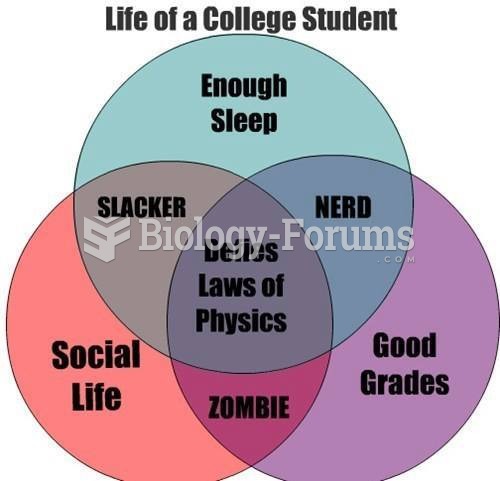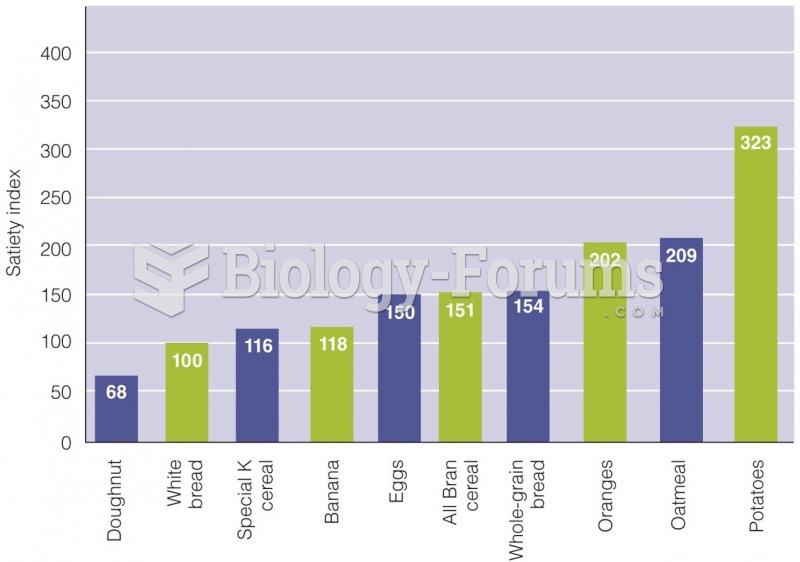|
|
|
Bacteria have flourished on the earth for over three billion years. They were the first life forms on the planet.
In 1844, Charles Goodyear obtained the first patent for a rubber condom.
Drying your hands with a paper towel will reduce the bacterial count on your hands by 45–60%.
Vampire bats have a natural anticoagulant in their saliva that permits continuous bleeding after they painlessly open a wound with their incisors. This capillary blood does not cause any significant blood loss to their victims.
Signs of depression include feeling sad most of the time for 2 weeks or longer; loss of interest in things normally enjoyed; lack of energy; sleep and appetite disturbances; weight changes; feelings of hopelessness, helplessness, or worthlessness; an inability to make decisions; and thoughts of death and suicide.







